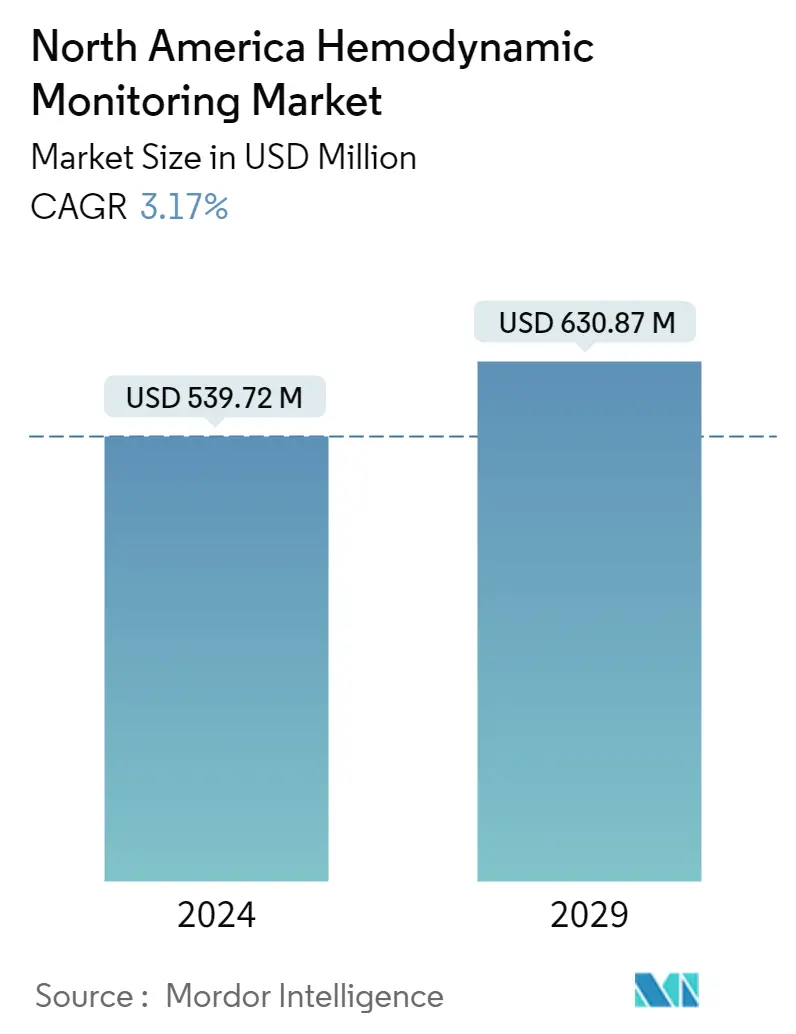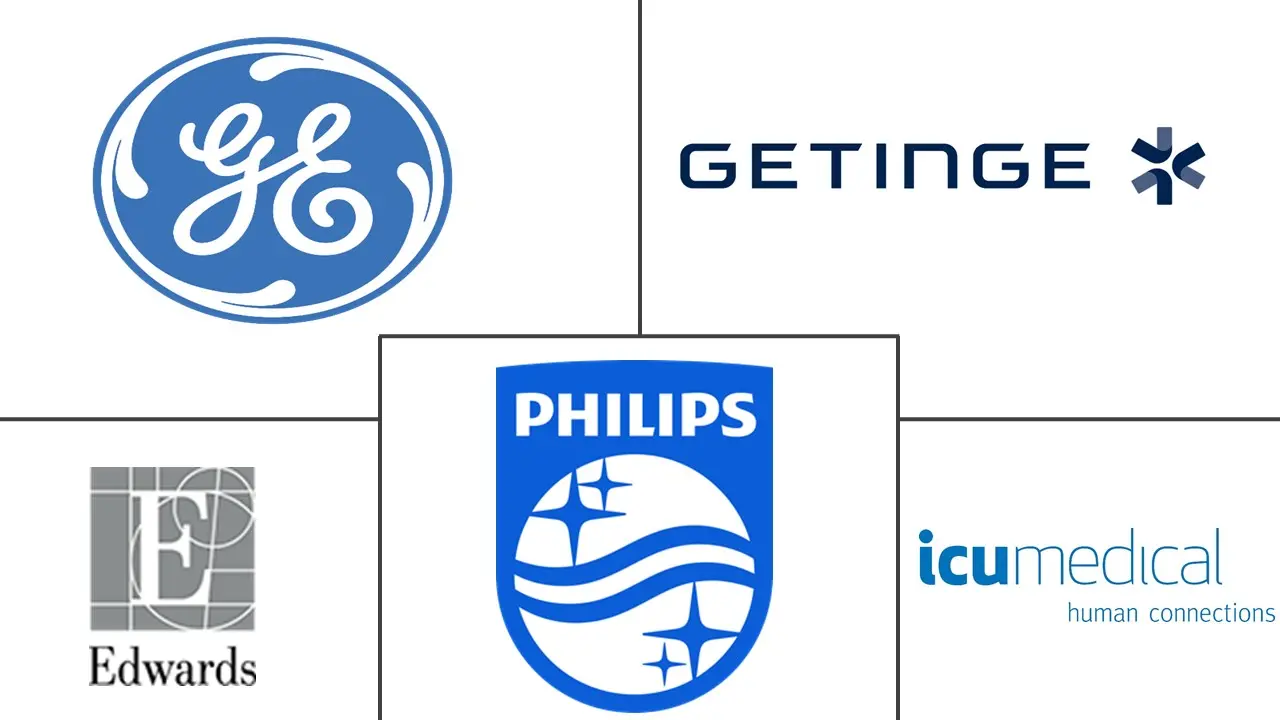Market Size of North America Hemodynamic Monitoring Industry

| Study Period | 2019 - 2029 |
| Base Year For Estimation | 2023 |
| Forecast Data Period | 2024 - 2029 |
| Market Size (2024) | USD 539.72 Million |
| Market Size (2029) | USD 630.87 Million |
| CAGR (2024 - 2029) | 3.17 % |
Major Players
*Disclaimer: Major Players sorted in no particular order |
Need a report that reflects how COVID-19 has impacted this market and its growth?
North America Hemodynamic Monitoring Market Analysis
The North America Hemodynamic Monitoring Market size is estimated at USD 539.72 million in 2024, and is expected to reach USD 630.87 million by 2029, growing at a CAGR of 3.17% during the forecast period (2024-2029).
The COVID-19 pandemic significantly impacted the North American hemodynamic monitoring market. Patients with COVID-19 respiratory failure showed a marked rise in blood pressure over time, not accompanied by distinctive markers of circulatory failure. For instance, according to the study published by the National Library of Medicine, in May 2022, comparing cardiac cases in COVID-19 to respiratory cases, cardiac injuries were documented in 19.7% to 29.8% of the patients. Numerous pathways contributed to the involvement of the cardiac myocardium in COVID-19, and up to 20%-30% of hospitalized patients exhibit this involvement, such as high troponin levels. This increased demand for hemodynamic monitors during the pandemic to assess critically ill patients admitted for COVID-19. Furthermore, the postponed treatment procedures and surgeries were resumed worldwide as the COVID-19 cases declined and pandemic restrictions were uplifted. This led to an increase in cardiac surgeries, creating a huge demand for hemodynamic monitoring. For instance, according to an article published by the Journal of the American College of Cardiology, in May 2022, there was a modest (3%-13%) increase in cardiac procedure volumes from pre-pandemic to 2021, associated with recovery rates of 105% to 119% in the United States and Canada. Hence, the COVID-19 pandemic has had a significant impact on market growth.
The key factors propelling the growth of this market are an increase in the number of critically ill geriatric cases, a rise in the prevalence of cardiac disorders and diabetes, increasing demand for home-based and non-invasive monitoring systems, and an increase in the number of people suffering from hypertension. For instance, as per the Heart&Stroke report of 2022, more than 750,000 people were living with heart failure in Canada in 2022, with over 106,000 new cases every year. Hence, for proper diagnosis and treatment of heart-related diseases, hemodynamic monitoring plays an important role which is likely to drive the market growth over the forecast period. Furthermore, according to American Heart Association data updated in July 2022, the number of elderly patients with calcific aortic stenosis is projected to more than double by 2050 in the United States. Thus, the demand for hemodynamic monitoring is likely to increase with the number of critically ill geriatric patients which is expected to promote market growth in North America.
Additionally, various strategies adopted by the key market players such as product launches, mergers and acquisitions are anticipated to drive the market over the forecast period. For instance, in April 2021, Spacelabs Healthcare, a division of OSI Systems, Inc. was awarded a three-year Premier agreement for physiological patient monitoring and non-invasive cardiology solutions in the United States. Such development is expected to propel the market growth in North America.
Hence, the abovementioned factors are attributed collectively to the market growth. However, increasing incidences of complications associated with invasive monitoring systems and stringent FDA guidelines for approval of new systems are the major factors restraining the market growth.
